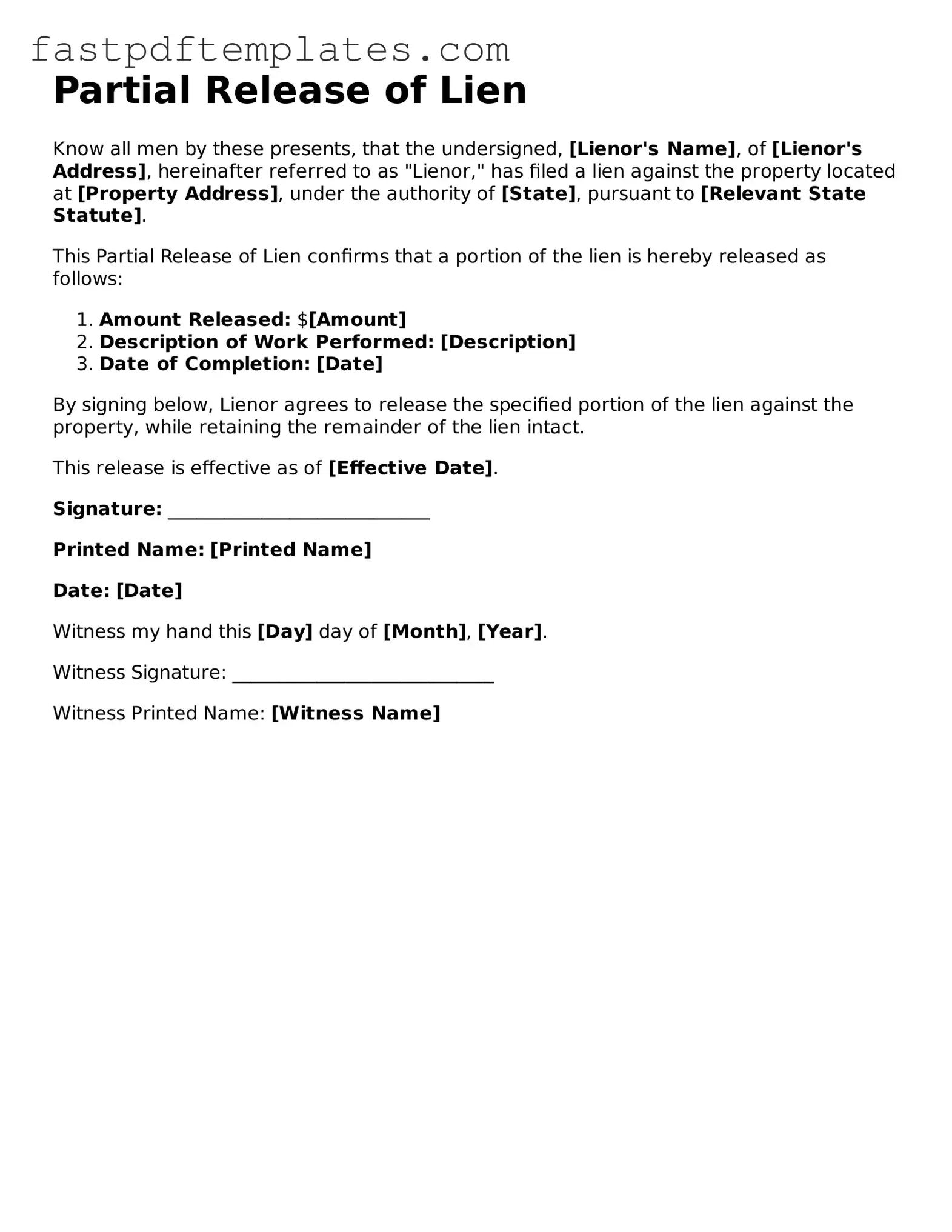The Partial Release of Lien form shares similarities with the Release of Lien document. Both serve to formally remove a claim against a property, typically in the context of construction or real estate. While a Partial Release of Lien only addresses a portion of the total lien amount, the Release of Lien document eliminates the lien entirely. This distinction is crucial for property owners and contractors to understand, as it affects their rights and obligations regarding payment and property ownership.
Another document that resembles the Partial Release of Lien is the Satisfaction of Mortgage. This document indicates that a mortgage has been paid off in full, releasing the lender's claim on the property. Like the Partial Release of Lien, it serves to clear a financial obligation related to real estate. However, while the Satisfaction of Mortgage pertains specifically to loans secured by property, the Partial Release of Lien deals with claims arising from unpaid work or materials in construction projects.
The Notice of Completion is also comparable to the Partial Release of Lien. Both documents are used in the construction industry to communicate important information about the status of a project. The Notice of Completion informs stakeholders that a project is finished, which can trigger the timeline for filing liens. In contrast, the Partial Release of Lien indicates that a portion of the lien has been satisfied, allowing for a clearer understanding of remaining obligations.
The Conditional Waiver and Release form is another document that aligns closely with the Partial Release of Lien. This form is used by contractors and subcontractors to waive their right to file a lien in exchange for payment. Like the Partial Release of Lien, it provides a mechanism to release claims, but the Conditional Waiver is contingent upon receiving payment, whereas the Partial Release confirms that some payment has already been made.
The Unconditional Waiver and Release form is similar as well. It operates on the same principle as the Conditional Waiver, but it does not depend on any future conditions. Once signed, it permanently waives the right to file a lien for the amount specified. This document can provide certainty for property owners, just as the Partial Release of Lien does for contractors who have received partial payment.
The Affidavit of Payment is another related document. This affidavit is used to confirm that all parties involved have been paid for their work on a project. Similar to the Partial Release of Lien, it provides assurance that there are no outstanding claims against the property. Both documents help to clarify financial relationships in construction, but the Affidavit focuses on confirming payment rather than releasing a lien.
The Escrow Agreement can also be likened to the Partial Release of Lien. This agreement typically involves a third party holding funds until certain conditions are met. In a construction context, it can serve to ensure that payments are made as work is completed. While the Partial Release of Lien addresses the release of a claim, the Escrow Agreement manages the flow of funds to ensure that all parties fulfill their obligations.
The Mechanic's Lien itself is a foundational document that is directly related to the Partial Release of Lien. A Mechanic's Lien is filed when a contractor or supplier has not been paid for work performed on a property. The Partial Release of Lien serves to partially lift this claim when some payment has been made, allowing for the continuation of the project without the full burden of the lien hanging over it.
Lastly, the Quitclaim Deed can be compared to the Partial Release of Lien in that both documents transfer interests in property. A Quitclaim Deed transfers whatever interest the grantor has in the property without guaranteeing that the title is clear. Similarly, a Partial Release of Lien relinquishes a portion of the lien claim, but does not necessarily resolve all financial obligations. Both documents play important roles in clarifying property rights and interests.
